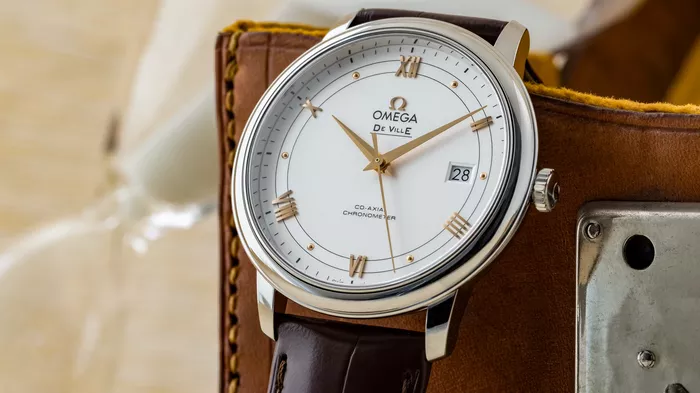The Omega Seamaster is a highly coveted luxury watch known for its precision, durability, and timeless design. However, with the popularity of the Omega Seamaster comes the risk of counterfeit versions flooding the market. As a watch enthusiast, it is essential to distinguish between a genuine Omega Seamaster and a fake one. This guide will provide you with specific, detailed, and point-by-point instructions to help you authenticate your Omega Seamaster.
Understanding Omega Seamaster History
To appreciate the Omega Seamaster fully, understanding its history is essential. Introduced in 1948, the Seamaster is Omega’s longest-running product line. It has been worn by famous personalities, including James Bond, and has gained a reputation for its water resistance and robust design. Knowing the heritage of your watch can help you recognize authentic models.
Check the Serial Number
Location of the Serial Number: The serial number of an Omega Seamaster is typically engraved on the back of the watch case or on one of the lugs. The serial number is a unique identifier and should be easy to read.
Verifying the Serial Number: Contact Omega customer service or an authorized Omega dealer to verify the serial number. Omega keeps records of all their watches, and they can confirm whether the serial number matches their records.
Consistency: Ensure the serial number on the watch matches the serial number on the warranty card or certificate of authenticity. Any discrepancies could indicate a fake watch.
Examine the Dial
Quality of Printing: The text on the dial of a genuine Omega Seamaster should be crisp and clean. Look closely at the “Omega” logo, the “Seamaster” script, and any other text. If the printing appears fuzzy or uneven, it could be a counterfeit.
Luminous Markers: Authentic Omega Seamaster watches use high-quality luminous material on the hands and hour markers. In low light, the lume should glow brightly and evenly. Poor-quality lume that fades quickly or is uneven is a sign of a fake.
Date Window: The date window on a genuine Omega Seamaster is precisely cut, with no rough edges. The date wheel should be centered and change smoothly at midnight. Misalignment or rough edges indicate a counterfeit.
Inspect the Case
Case Material: Omega uses high-quality stainless steel, titanium, or precious metals for their Seamaster cases. Check the weight and feel of the case. A genuine Omega Seamaster should feel solid and well-crafted.
Case Back: The case back of a Seamaster often features an engraved Omega logo, the Seamaster name, and a wave pattern. The engraving should be precise and well-defined. Any signs of poor-quality engraving or misspellings are red flags.
Helium Escape Valve: Some Seamaster models, particularly the Professional Diver series, have a helium escape valve. The valve should be functional and well-integrated into the case. A non-functional or poorly constructed valve indicates a fake.
Evaluate the Movement
Transparent Case Back: Many modern Omega Seamaster models feature a transparent case back, allowing you to see the movement. The movement should have the Omega logo and possibly a serial number engraved on it.
Movement Quality: The movement of a genuine Omega Seamaster is a work of art, with high-quality finishing and precision engineering. If the movement looks rough, unfinished, or lacks the Omega logo, it is likely a fake.
Functionality: Ensure that all functions of the watch, such as the chronograph, date change, and second hand, operate smoothly and accurately. A malfunctioning movement is a clear sign of a counterfeit.
Assess the Bracelet and Clasp
Bracelet Quality: The bracelet of an Omega Seamaster should be made of high-quality materials and feel sturdy. Check for any rough edges, sharp corners, or signs of poor workmanship.
Omega Logo: The Omega logo should be engraved on the clasp and possibly on the links. The engraving should be crisp and clear, with no signs of poor-quality stamping.
Clasp Mechanism: The clasp on a genuine Omega Seamaster is robust and operates smoothly. It should snap securely into place and release easily when the correct buttons or levers are pressed.
See Also: 7 Best Omega Seamaster To Buy
Check the Packaging and Documentation
Box: A genuine Omega Seamaster comes in a high-quality box with the Omega logo. The box should feel solid and well-made, with no signs of poor craftsmanship.
Warranty Card: The warranty card should include the serial number of the watch, the model number, and the date of purchase. The card should also have the Omega logo and be printed on high-quality material.
Instruction Manual: The instruction manual should be printed on high-quality paper and include detailed information about the watch. Look for any signs of poor printing or misspellings.
Seek Professional Authentication
Authorized Dealers: Take your watch to an authorized Omega dealer or a reputable watchmaker for authentication. They have the expertise and tools to verify the authenticity of your watch.
Watch Forums: Join watch enthusiast forums and seek advice from experienced collectors. Sharing high-quality images of your watch can help others provide feedback on its authenticity.
Omega Service Center: Send your watch to an Omega service center for a thorough inspection. Omega’s technicians can provide a definitive answer regarding the authenticity of your watch.
Conclusion
Distinguishing a genuine Omega Seamaster from a counterfeit requires attention to detail and knowledge of the brand’s standards. By following these steps, you can confidently assess the authenticity of your watch and ensure that you are the proud owner of a genuine Omega Seamaster. Remember, if you have any doubts, it is always best to seek professional advice to avoid costly mistakes.

